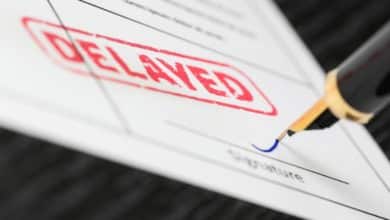Passive Gains and Losses
Understanding the dynamics of passive gains and losses is crucial for investors and individuals seeking to maximize their financial well-being while minimizing their time and effort.

Contents
In finance, there are various strategies and approaches to making money, and one popular concept is passive gains and losses. These terms refer to the accumulation or depletion of wealth without active involvement or effort. Unlike active income, which requires constant attention and labor, passive gains and losses allow individuals to earn or lose money with minimal involvement once the initial investment or action has been made. Passive gains are the profits that accrue to individuals without requiring ongoing effort or direct participation. These gains can come from various sources such as investments, real estate, intellectual property, or business ventures. On the other hand, passive losses represent the reduction in wealth or negative returns that occur without active involvement.

What are Passive Gains?
Passive gains are often associated with investments that generate income streams without requiring constant attention or active management. One of the most common examples of passive gains is dividend income from stocks. Individuals who invest in dividend-paying stocks receive a portion of the company’s profits periodically without actively participating in its day-to-day operations. Dividend payments can provide a steady stream of passive income, which can be reinvested or used to cover living expenses.
Another source of passive gains is rental income from real estate investments. Owning properties and leasing them to tenants allows investors to generate regular income without continuous engagement. Whether it’s residential apartments, commercial spaces, or vacation rentals, the rental income can provide a consistent stream of passive gains.
Intellectual property, such as patents, copyrights, and trademarks, can also be lucrative sources of passive gains. Consider an author who writes a bestselling book. Once the book is published, the author continues to earn royalties from book sales without actively writing or marketing it. Similarly, musicians receive passive income from album sales, streaming services, or licensing their music for commercials, movies, or TV shows.

What are Passive Losses?
While passive gains are desirable, it’s essential to understand the concept of passive losses to mitigate potential risks. Passive losses occur when investments or ventures decrease wealth or have negative returns without active involvement. One common example is a decline in the value of real estate investments due to market fluctuations or economic downturns. If property values decrease, individuals may experience passive losses until the market recovers.
Similarly, investing in stocks or other financial instruments that perform poorly can lead to passive losses. For instance, if an individual purchases shares of a company that eventually goes bankrupt, they may lose their investment without actively participating in the company’s operations or management decisions.

Factors Affecting Passive Gains and Losses
Several factors influence the potential for passive gains and losses. The choice of investment vehicle, market conditions, the performance of the underlying assets, and external economic factors all play significant roles. For example, investing in a well-diversified portfolio can reduce the risk of significant passive losses by spreading the investment across various assets, sectors, or geographical regions.
Additionally, the concept of leverage can impact passive gains and losses. Leverage refers to using borrowed capital to increase the potential returns of an investment. While leverage can amplify gains, it can also magnify losses. For instance, if an investor borrows money to invest in real estate and the property’s value decreases, they may experience a substantial passive loss that exceeds their initial investment.

How to Manage Passive Gains and Losses?
Individuals must adopt a proactive approach to manage passive gains and losses effectively. Diversification across different asset classes, sectors, and regions can help mitigate potential losses by spreading the risk. It is crucial to conduct thorough research and due diligence before investing in any investment opportunity. Understanding the fundamentals of the investment, analyzing historical performance, and considering future market trends can assist in making informed decisions and reducing the likelihood of significant passive losses.
Furthermore, regularly monitoring and reviewing investments is essential. While passive gains may not require active involvement, it is still crucial to keep an eye on the performance of investments and make adjustments when necessary. This could involve rebalancing a portfolio, selling underperforming assets, or exploring new opportunities to maximize passive gains and minimize losses.
Investors should also stay informed about economic indicators, market trends, and regulatory changes that may impact their investments. Being aware of factors that could affect the value of assets or their income allows individuals to adapt their strategies accordingly and minimize potential losses.
Additionally, seeking professional advice from financial advisors or investment experts can provide valuable insights and guidance in managing passive gains and losses. These professionals have the knowledge and experience to help individuals develop personalized investment strategies, assess risk tolerance, and identify suitable opportunities for passive income generation.

Some Examples of Passive Gains and Losses
To illustrate the concept of passive gains and losses, let’s consider a few real-life scenarios:
Rental Property Investment: Alice decides to invest in a rental property in a popular tourist destination. She purchases a vacation home and lists it on various rental platforms. Over time, she earns a steady rental income without actively managing the property on a daily basis. This rental income represents her passive gains. However, if the local tourism industry experiences a decline, resulting in fewer bookings and lower rental rates, Alice may face a period of passive losses until the market recovers or she adjusts her pricing strategy.
Stock Market Investment: Bob invests in a diverse portfolio of stocks. Some of these stocks pay regular dividends, which contribute to his passive gains. However, if the stock market experiences a significant downturn, causing the value of his portfolio to decline, Bob may face passive losses. He has the option to hold onto the stocks in the hope of a market recovery or sell them at a loss to mitigate further potential losses.
Intellectual Property: Emma is an artist who creates and licenses her artwork to various companies for use in merchandise, such as mugs, t-shirts, and posters. Whenever her artwork is used, Emma receives royalty payments, which represent her passive gains. However, if there is a decline in the demand for her artwork or a shift in consumer preferences, resulting in reduced licensing opportunities, Emma may experience passive losses until she adapts her creative style or explores new markets.





